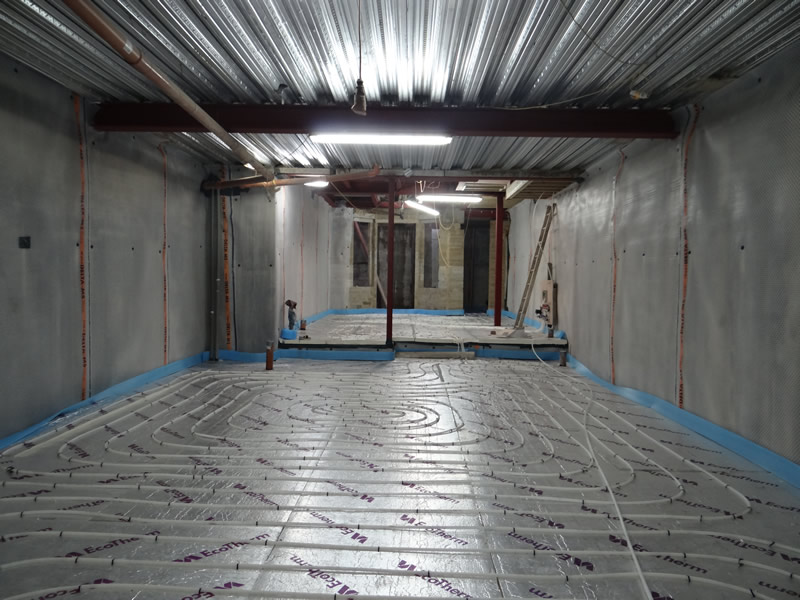In places where space is at a premium, extending downwards is a popular solution to adding extra room to your property. Basements and cellars, though, are traditionally dank places, and they need to be made dry in order to be habitable. Tanking is the traditional way of doing this, but there are other alternatives available.
In cities like London where land is at a premium, extending your property outwards may not be practical and in any case would lead to the loss of valuable outside space. Similarly, extending upwards may not be possible due to planning restrictions, or maybe you have already extended into the loft. It’s not surprising therefore that many people are starting to think about extending downwards instead. This can be either converting an existing cellar into living space or even by digging an entirely new basement.
Low and dry
The biggest problem with building downwards is keeping the space dry. Cellars are often damp, dank places and you need to address this in order to make the space habitable. There are a number of methods available to achieve this. In older houses cellar tanking in London is the traditional approach.
Water gets into basements and cellars due to hydrostatic pressure, where the water in the surrounding soil seeps in through gaps in the brick or stone work. Tanking is designed to prevent this, and it uses a lining or slurry applied to the interior walls of the cellar to keep the moisture out.
The material used for tanking was traditionally cement, but in more recent times it could be bitumen or an epoxy resin. It’s important to note that cellar tanking in London doesn’t remove moisture; it just keeps it out. Special attention therefore needs to be paid to potential weak spots. These include where the walls meet the floor and places where pipes or cables pass through the wall.
Problems and alternatives
Tanking is often found in older properties, but it’s a system that can have problems. It’s not ideal for new builds as settlement can lead to cracks that allow water in. Similarly if your property is near to a road or railway line that causes vibrations, these too can cause cracks. You also need to take care when fitting out or decorating your cellar not to drill into the tanked walls.
Fortunately there are alternative ways of keeping your cellar dry. The current approach is to fit a drainage system. This effectively involves having a false inner wall with a waterproof membrane so that moisture can drain down behind it, be directed into a sump and then be carried away using an electric pump.
These newer systems are more cost effective than applying tanking. They are generally unobtrusive, as the pump only runs when the water in the sump reaches a certain level. They will require ongoing maintenance to the drainage pump, so this needs to be placed in an accessible location.

